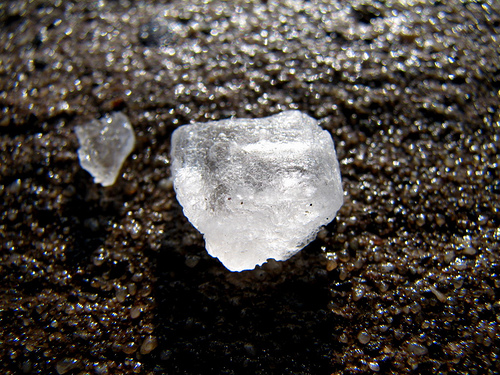Five Questions Every Landscaper Should Ask About Ice Melt
Wintertime is fast approaching in the United States.
For everyone north of the Mason-Dixon Line that means snow. And ice. And cold.
For landscapers that means shifting from green plants to white sidewalks. While that business shift is easy to figure out the question remains – How do you know which ice melt to use?
Ice melt is any mixture of product meant to remove the ice from sidewalks, driveways and walking paths.
But, with so many different blends, ingredients and applications how do you know you are using the right product? By asking, and finding, the answers to these five questions you will be well on your way to clear sidewalks
Question #1: What is eutectic temperature and why do I need to know it?
Eutectic temperature is the temperature at which an ice melt will stop melting ice. If you are a landscaper or property manager you may be tempted to use urea (a lawn care product) because it is inexpensive and helps fertilize grass due to its high nitrogen content.
Melt the ice and green the grass? That sounds too good to be true, right?
It is. Urea has a eutectic temperate around 10 degrees Fahrenheit. In layman’s terms that means straight urea wont melt ice when the temperature nears 10 degrees and won’t do a lot of good even at 15 degrees. Don’t forget that straight urea is 45% nitrogen, which means the more you apply the better chance you have of burning surrounding grass and plants.
Takeaway: Know the eutectic temperature of your ice melt product to ensure you are using it in the proper application. A reputable product will display this temperature on the bag.
Question #2: What ingredients in the bag actually melt ice?
As we showed you above, don’t be swayed by ingredients that appear to offer a value add but don’t help your main goal of melting ice. If you need to melt ice when the temperature dips below zero degrees Fahrenheit, the only ingredients you should be looking for are calcium chloride or magnesium chloride.
There are other ingredients that may be added to help speed up the ice melting process by raising the temperature of the ice but these two will do the bulk of the work. Ingredients like sodium chloride (salt) melts down to 5 degrees Fahrenheit. Additives like urea, calcium magnesium acetate and potassium chloride (potash) offer little to no ice melting help at or below 10 degrees Fahrenheit.
Takeaway: Just like the food you eat, read the ingredients on the bag. If there is a lot of filler or you don’t see ingredients listed above, you probably won’t effectively melt the ice.
Question #3: How much of the above ingredients is enough in a blended product?
Like we stated before, a mix of ingredients may be in your bag. They do things like lower the melting temperature of the ice or reduce corrosion. Studies have shown that trace amounts of these ingredients don’t achieve the results they are added to perform.
If a manufacturer won’t list the percentages for each ingredient then chances are you won’t see effective value add from these products presence.
Takeaway: Same as #2. Read the bag. Who knew melting ice required so much reading?
Question #4: How do I know a product does what it claims to do?
As more companies come into the market with varied blends and claims, it can be hard to navigate what truly works and what doesn’t. Having a distribution partner that understands the market and has experience dealing in ice melts is a big bonus.
You can also look to the Strategic Highway Research Program (SHRP) to substantiate claims or to various studies that point to the effectiveness of certain products and ingredients.
Takeaway: Don’t fall for fancy terms or marketing when it comes to buying the proper product for your application.
Question #5: How do I know the best way to apply ice melts?
With any ice melt there are things to steer clear of. Whether it is when to apply ice melt to new concrete or the harm ice melt can cause pets and vegetation, your distributor should have staff capable of consulting you on proper usage. You can also visit manufacturers websites and read Material Safety Data Sheets (MSDS) for each product prior to application to ensure proper use.
Takeaway: Do your research. If you don’t have time to properly research a product before you purchase or apply it make sure your distributor is knowledgeable enough to answer your questions.
Final Thoughts
Whether you are a landscape firm trying to navigate your first winter season or a seasoned property manager, if you ask and get the proper answers to these five questions, you will be well on your way to proper ice melt application and clear sidewalks this winter.
If you have any questions about your current ice melt application, needs or problems you can contact our Janitorial Product Specialist Tom Sughrue at 800-283-0097 or send him a note at tsughrue(at)flexp.com.
Image Credit: audreyjm529
About The Author: Christopher Theisen is the Director of Digital Communications for FlexPAC, a distributor of industrial packaging supplies, janitorial supplies (like ice melt) PPE gear, and automation equipment. While they are based in Indianapolis with locations in Elkhart and Quad Cities, Illinois. You can also find them on your favorite social outpost.
You May Also Like
Leave a Reply
You must be logged in to post a comment.




















